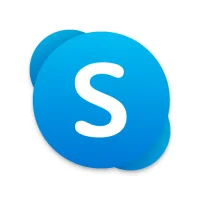How can I provide feedback or suggestions for improving the application?
13 min read Providing Feedback and Suggestions for Application Improvement - written by Hamza Bose, Senior Content Marketer May 08, 2024 11:31
Providing Feedback and Suggestions for Application Improvement
1. Overview of Feedback and Suggestions Process
The summary is intended to help users in giving feedback and suggestions through a feedback menu. The menu is a typical feature included in most smartphone applications to support feedback. Most users are potential value creators through the feedback and improvement suggestions. Through this feedback process, we would get feedback or suggestions from the user involving people from different communities, paving the way toward the realization of application quality that comes from user participation. By giving users a valuable feature, the respondents feel that the application is of great benefit both to them personally, to the application development team, and to the user community.
To increase the engagement of users in the feedback menu, this article provides a summary description about the importance of providing feedback and suggestions for the improvement of features or services and presents general contents that could be used to complete the task. It also suggests that feedback and suggestions content can be provided in the form of feedback, question (request), suggestion, opinion, compliment, and report in order to facilitate the classification of feedback and suggestions by the application team when considering and processing it. To establish a user-centered culture where users are participating in the effort to improve the application/feature, an approach using a reward system that provides benefits, incentives, or rewards for users who provide beneficial feedback and suggestions may be beneficial.
Smartphone application users may occasionally find something that they would like to report, ask questions, provide feedback, or suggestions for improvement. It can be about the feature, appearance, ease of use, or any other issues. The kind of problem can be solved by asking for help from the developer/provider support team. On many platforms, the support can be reached easily via the feedback menu. However, due to various reasons (lack of time, inconvenience, or uncertainty about their ability to give valuable suggestions, etc.), many users do not provide the needed feedback and suggestions.
2. Submitting Feedback and Suggestions
Conveniently, users can write down details of their feedback or suggestion to be given to the admin. The details include the subject of their feedback or suggestion, type of the feedback or suggestion, description, and notes about the feedback or suggestion they are giving. To make it even more convenient, users can take a screenshot of their problems or inspirations in the form of a screen capture and send them to the admin via email from the "Feedback" link in the app. With this feature, users do not have to worry about the time wasted just to write an email and attach their screen capture shot file. The consequences that need to be considered by us are that users can only send their feedback or suggestion outside the app, such is the system limitation.
We happily receive your feedback or suggestions to improve the app and add features that make your life easier. If you have an idea to add new functionality that is beneficial and eases the use of our app, please let us know. You can simply click on the "Feedback" link from the app's main menu and write your feedback or suggestion. Then your suggestion will be transmitted to our system and managed by the system to be given further treatment by the relevant person. Also, you will be updated about the progress of your feedback or suggestion.
3. Reviewing and Prioritizing Feedback and Suggestions
When considering the use of feedback and other prioritization criteria, acknowledge that the "vocal minority" may sometimes scream loud enough such that their request becomes "de facto prioritized" by the organization's response. While this is rare, defer to understanding the needs of most users, but consider the outcry when prioritizing feedback. In most cases, the feedback organization spends much time managing and addressing should align with the company's (or another organization's) priorities.
The more open and transparent the organization can be about the feedback it has received and what it intends to address, the more credibility and benefit the organization will receive. Be transparent and keep communicating with users. Keep the channels of dialogue open with clear and frequent communications; this will help set user expectations about when they may see their feedback or an improvement applied.
To decide what to work on next, consider the usefulness, importance, and urgency of the feedback. Knowing what to prioritize can depend on several factors. For example, company management may provide a specific item or directive with a timeline. If not, consider working on items that fit under one or more top-level discussion items or themes that are associated with organizational priorities. Also, use the feedback and ideas of your own staff (and stakeholders). This user community is in a unique position of understanding the most pressing and complex topics that relate to their everyday work with the application.
After feedback and suggestions for improvement have been collected, the next step is to prioritize the most meaningful or high-priority items to address for the next shipment or release. Prioritizing feedback is important because not all feedback is equal. Also, typical budget constraints or staff will prevent all feedback or ideas from being addressed—which is fine and expected.
4. Implementing Accepted Feedback and Suggestions
An open-source project that wants the contributions of the open-source community needs to place importance on the implementation process of the feedback or suggestions that have been given. To ensure the implementation of the desire of the open-source community in the feedback, below are some things that can be done.
In the open-source community, rejection or cancellation of feedback or suggestions is not allowed. However, to respect the limited capacity and time available, there is an absolute need to apply. Therefore, as a form of rejection of feedback or suggestions, open-source projects in LontarReview carry out discussions on the list of feedback or suggestions that will be disregarded using a consensus decision.
The main problems in implementing the suggestions in the open-source project are usually that the project programmers do not have enough time and allocate developers who are good enough to change the suggestions. Furthermore, it is difficult for the developers to get in touch with the contributors who are concerned to carry out the suggestion. This fact usually inhibits the developers in carrying out collaboration and learning from the contributor.
After the feedback period, the team, along with the help of volunteers from the open-source community, will discuss and determine which feedback or suggestion will be implemented. This discussion is usually held in the developer's booth, either physically or through communication channels. In the next session with LontarReview, the list of feedback or suggestions that will be implemented will be decided and marked. If there are feedback or suggestions that will not be implemented (canceled), then the feedback is said to be rejected and followed by a brief explanation.
5. Monitoring and Evaluating Application Improvements
For instance, two types of improvements are reported by PROKIM - gather real-life information. Moreover, they should compare their new process with that of the original one. The evaluation should also see how the improved process serves better in terms of improving performance on all examined criteria. As for the results, it is normal for KAM workers to look at the value of the throughput time after eliminating health hazards. The time-consuming and labor-intensive research is commonly labeled as "not in my backyard". Finally, the focus group discussion of stakeholders produces interesting results related to environmental and water safety in the Integrated Industrial Estate, particularly in PT. PROKIM, which still raises a perception of negative image of big industries. Governments and local organizations should know that protection of the environment and public health are international imperatives. Cooperation between stakeholders, governments, and companies is expected to conduct regular evaluations and activities that aim to continually improve in handling hazardous.
After the improvements are done, the next step is to monitor and evaluate their impact on the KAM production process. It is necessary to do that to ensure the quality of the improvement and the benefits it provides. Basically, there are two procedures in the monitoring and evaluation steps: a) Monitoring whether the problems are not repeated, whether measurements are conducted according to the objectives, and whether other problems have been avoided by using the house of improvement; and b) Evaluating the progress made by checking if the data concerning the problem is better and fulfilled or not. Does the KAM worker feel the improvement?
User Comments (0)
Popular Apps










Editor's Choice









